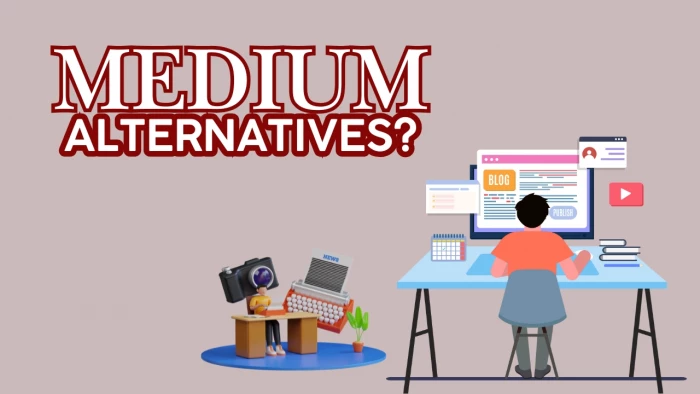

Publishing has evolved far beyond traditional blogging, and Medium is no longer the only destination for writers seeking reach and community. Whether you want complete control of your content, faster ways to monetize, or simply a vibrant community of readers, there are now multiple alternatives that offer similar simplicity with different strengths. This guide highlights the best platforms like Medium—covering their audiences, monetization options, and practical use cases—so you can choose the one that aligns with your writing goals.
Why it’s like Medium: frictionless writing UI, community discovery, and an audience already on-platform.
What’s different: Substack is newsletter-centric; monetization is direct subscriptions with a 10% platform fee plus Stripe processing. Supports custom domains and social-style discovery (Notes, recommendations).
Best for: journalists, analysts, and niche experts building paid readership fast.
Why it’s like Medium: beautiful editor, minimal friction to publish.
What’s different: You own the site, design, SEO, and native memberships/newsletters (Stripe), with no platform revenue cut. Ghost(Pro) hosted plans currently start around $18/mo billed annually (promos may vary).
Best for: creators turning a publication into a product (tiered access, paid community).
Why it’s like Medium: easy publishing, a Reader feed, and newsletter capability.
What’s different: Full CMS flexibility (themes, plugins on higher tiers), WordAds and other monetization routes on paid plans; plan features vary.
Best for: teams needing SEO control, extensibility, and long-term portability.
Why it’s like Medium: instant publishing with community distribution.
What’s different: Dev-first features (syntax, APIs/docs hubs, free custom domain mapping), AI writing/search features. Great organic reach within the dev audience.
Best for: engineers, DevRel teams, and product docs that double as content marketing.
Why it’s like Medium: simple Markdown editor, tags, drafts/scheduling, RSS imports; huge dev readership.
What’s different: Community runs on Forem; no native monetization—this is for reach, reputation, and discussion.
Best for: individual engineers/learners seeking feedback and community visibility.
Why it’s like Medium: low-friction writing and a growing ecosystem.
What’s different: Growth levers (referrals/Boosts, ad marketplace), 0% take on paid subs on eligible plans, and transparent plan pricing (Launch free; Scale $43/mo; Max $96/mo at the time of writing).
Best for: creators who want newsletter revenue without a platform cut and with built-in monetization networks.
Why it’s like Medium: publish quickly to a multi-topic network with algorithmic discovery.
What’s different: A rate-per-1,000-reads model ($3.80 standard / $6.00 Vocal+) plus tips/bonuses; payout thresholds apply. Good for repurposing articles you already promote.
Best for: side income from broad-appeal pieces you can drive traffic to.
Why it’s like Medium: magazine-style hub with strong tech readership.
What’s different: Human editorial review (median 3–5 business days) before publishing; high signal-to-noise and homepage curation.
Best for: thought leadership, case studies, and long-form tech narratives.
Why it’s like Medium: clean, distraction-free writing.
What’s different: ActivityPub/Fediverse support (optional), zero-bloat pages, and simple paid hosting (from $6/mo). Excellent for personal essays and lean publishing.
Best for: writers who value speed, privacy, and owning a quiet corner of the web.
Why it’s like Medium: native long-form publishing with built-in discovery.
What’s different: Access to 1B+ members, increasingly newsroom-style support, and expansion into editorial/news formats; newsletters are heavily promoted in-app. Great for lead gen and partnerships.
Best for: B2B creators, consultants, founders, and job-market content.
Why it’s like Medium: anyone can create an account, write articles, and publish in multiple categories.
What’s different: Designed as an open publishing platform rather than a closed CMS. Focuses on visibility, networking, and collaboration rather than subscription revenue or per-read payouts.
Best for: writers who want Medium-style ease of use and exposure without setting up their own website.
To make this guide comprehensive and current, I cross-referenced vendor docs and multiple “Medium alternatives” roundups (and ignored outdated or thin sources). Representative examples used to validate feature sets and positioning include Zapier’s 2025 blog-site comparison, WPBeginner’s 2025 platform guide, and several recent Medium-alt lists (Feather, BuddyXTheme, Bullet/Super).
Then I verified each pick’s official feature/pricing pages and help centers:
Be the first to post comment!